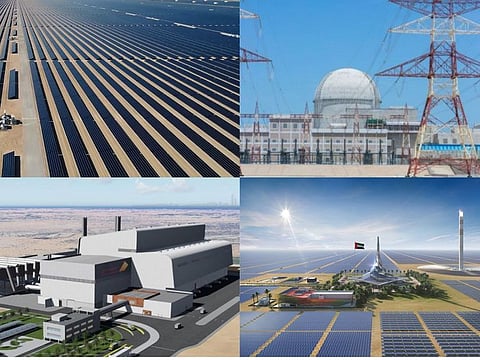UAE’s renewable energy focus is showing up well on its gas exports
If renewable capacities free up more gas for exports, GCC economies gain collectively

The rapid pace of renewable energy development in some GCC countries may suggest to some they are attempting to create an alternate energy resource since these economies are not particularly blessed with sizeable oil and gas reserves. The reality is the opposite. With enormous reserves that will last them for decades more, the GCC states are well ensconced.
This trend, particularly in the UAE and Saudi Arabia, indicates their understanding of the need for energy diversity, by making use of renewable energy sources abundant in the region, such as solar and wind. These two countries are also still developing traditional resources such as oil and gas.
This trend, which moves in two parallel directions, will contribute to economic diversification, growth rate, exports, and energy security. All of these are crucial for the continued expansion of the Gulf economies and diversification of revenue sources.
UAE renewable capacity
In addition to renewable energy projects, this year has seen a rapid acceleration in this space. Since the UAE announced its green development strategy in 2012, its renewable energy sources have considerably advanced. The strategy aims to promote renewable energy’s contribution to 30 per cent by 2030, a target that will more likely be achieved earlier than expected due to the substantial developments made to date.
In this regard, the Al Dhafra Solar Power Plant can be referred to. The largest solar power plant in the world was inaugurated recently, adding to the many solar-powered ventures in the other emirates. The increase in capacity together with the operation of the Barakah nuclear power plant has allowed the UAE to reduce use of natural gas for electricity, thus increasing the country’s exports of the commodity, especially after the recent discoveries of new gas fields.
This occurred in a period when worldwide demand was at its highest, driving prices to ever high levels and supporting the state’s finances. The renewable energy contribution is expected to grow, allowing more gas to be exported abroad, in itself a radical shift in the policy of sustainable and environmental-friendly energy.
Better use of GCC’s electricity grid
This year, five new renewable energy projects with a combined output capacity of 5,100MW were announced in Saudi Arabia, made up of three solar and two wind projects. These will undoubtedly increase the renewable energy’s contribution to power production and provide the same outcome as in the UAE. Additionally, they will help place more gas for exports, generating extra resources for the state.
Since technologies have become available for better electric grid interconnectivity, this could well be another major development to maintain the momentum for exporting power produced from renewable sources. This is happening at a time when more investments are being made in the production of oil and gas. The GCC countries lead the world in terms of investment in this industry, which had seen a huge drop in elsewhere for many reasons.
According to projections, this will enhance oil production in the UAE from 3.2 million barrels per day to 5 million barrels per day over the next five years. In addition to the expected growth in gas output, Saudi Arabia’s oil production will rise to 13 million barrels per day, giving the GCC states a unique and powerful position in the world’s energy balance. This indicates GCC states are about to enter a new phase of diversification in sustainable energy, which will have significant economic effects on their economic future.
Sign up for the Daily Briefing
Get the latest news and updates straight to your inbox

